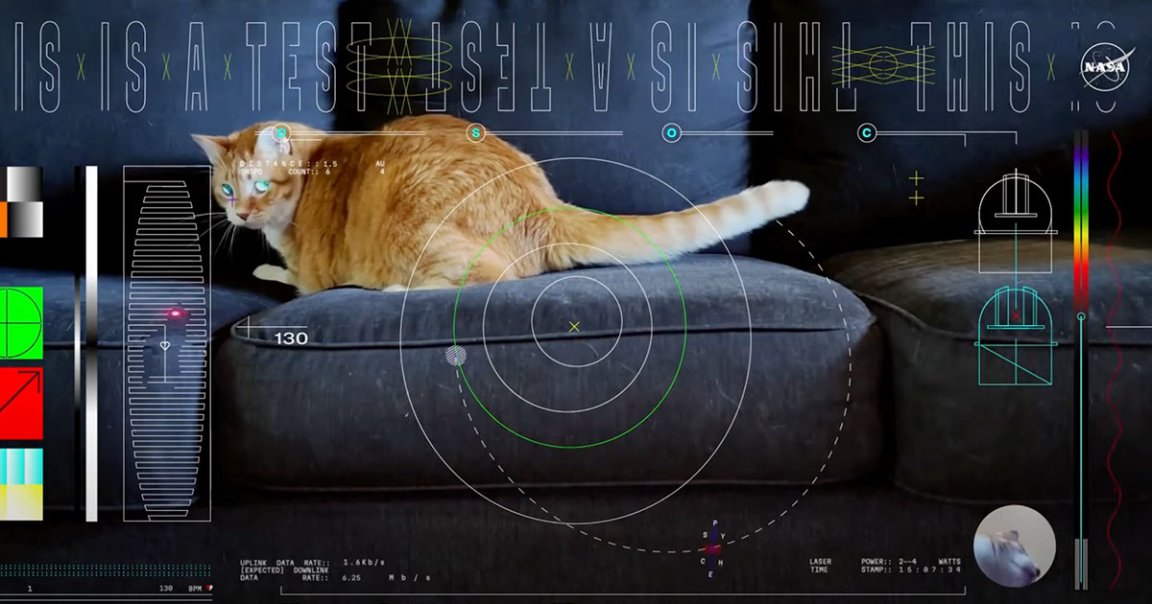
Taters Time
NASA’s Psyche spacecraft, which is currently heading to explore a metal-rich asteroid between Mars and Jupiter, just performed a feat of communication that would make the 2000s internet proud: it beamed back a cat video from almost 19 million miles away.
It’s the first time the space agency has ever beamed a video through deep space using a laser.
The 15-second 4K video shows an orange tabby named Taters chasing a red dot from a laser pointer — get it? — an arguably hilarious choice if it were to ever be intercepted by an extraterrestrial civilization.
Despite the adorable theme of the footage itself — NASA couldn’t have picked a more perfect visual representation of our own civilization — it’s still a remarkable technical achievement that could lay important groundwork for upcoming deep space missions.
“This accomplishment underscores our commitment to advancing optical communications as a key element to meeting our future data transmission needs,” said NASA Deputy Administrator Pam Melroy in a statement, adding that it could transform “how we communicate during future interplanetary missions.”
Major Lasers
It took Psyche’s flight laser transceiver 101 seconds to beam the message to the Hale Telescope at Caltech’s Palomar Observatory in California, which relayed the data to NASA’s Jet Propulsion Lab.
That’s speedy compared to previous deep space data transmissions. At a whopping 267 megabits per second, the transceiver is anywhere from ten to 100 times faster than other state-of-the-art radio frequency systems.
“Despite transmitting from millions of miles away, it was able to send the video faster than most broadband internet connections,” said JPL project lead Ryan Rogalin in the statement. “In fact, after receiving the video at Palomar, it was sent to JPL over the internet, and that connection was slower than the signal coming from deep space.”
In short, it’s a big leap for how we stay in touch with distant spacecraft and the kinds of data they can beam back. According to NASA, the same kind of tech could one day allow us to stream HD images and video back from human outposts on Mars.
More on the mission: NASA Receives Laser Signal From 10 Million Miles Away